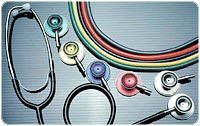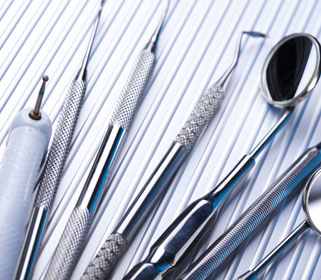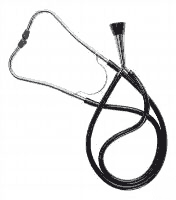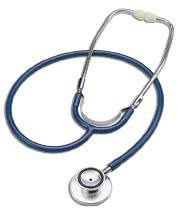Home » Hospital & Durable Medical Equipment » The Medical Stethoscope: A Short History » The Medical Stethoscope: A Short History
The Medical Stethoscope: A Short History

Color-Coordinated Dual-Head Stethoscope, Red
Retail Price: $8.02
Your Price: $6.42
 Unit: single
Unit: single
For nearly 200 years stethoscopes have been one of the most important diagnostic tools in the medical profession. The medical stethoscope has become so common a symbol of the medical profession that nothing else identifies a healthcare professional more than a medical stethoscope draped around the neck.
Medical stethoscopes are used to examine sounds generated from the interior of the body. They are used to listen to normal and abnormal respiratory, cardiac, pleural, arterial, venous, uterine, fetal, and intestinal sounds. With the assistance of a sphygmomanometer, they’re also used to monitor blood pressure. The qualities of the sounds produced can signify abnormalities of these organs. Many diseases of the heart, lungs, stomach, and blood vessels can be recognized with the trained use of medical stethoscopes.
Medical and cardiology stethoscopes have undergone many innovations since their inception. To evaluate some of the latest innovations in this technology, click the links below:
Electronic Stethoscopes - These units amplify sound and some units make it possible for several clinicians to listen to a particular organ at the same time.
Pediatric Stethoscopes - These units feature a unique raised diaphragm for greater sound amplification.
Fetal Doppler Ultrasound Stethoscopes - These units allow you to detect the fetal heart rate as early as 9 weeks, confirm fetal life throughout pregnancy, and assess fetal heart rate and rhythm during labor and delivery.
From the time the instrument was invented in 1816 the medical stethoscope has been the most informative and reliable tool for diagnosing many diseases. A young French physician by the name of Rene Theophile-Hyacinthe Laennec invented the instrument in order to examine a young female patient for fear she may have contracted tuberculosis. During that time, the common method of listening to a patient’s chest was to simply place one’s ear directly on the patient’s chest. Laennec was embarrassed to conduct this procedure to a female patient out of modesty. Recalling a fact he learned in childhood, being that sound travels through solids, he immediately rolled up 24 sheets of paper and placed one end to the woman’s chest and placed the other end to his ear. Not only did he discover that the sounds were transmitted through the paper, but the sounds were louder and clearer. From then on, Laennec devoted the majority of his life to developing this instrument.
The medical stethoscopes has undergone many significant developments since Laennec’s time. A binaural instrument was developed by G.P. Cammann, a New York physician, at the beginning of the 20th century. This instrument consisted of two earpieces with flexible rubber tubing that connected them to a two branched metal chest cone. This enabled sound to be heard in both ears while the instrument's flexibility allowed the physician to listen to various areas of the body without changing position. By the end of the 19th century, flexible, binaural stethoscopes were quite common. Although some detracting physicians felt the invention weakened the physician's powers of diagnosis, the instrument nevertheless has remained the most important of all diagnostic instruments in the medical profession. Developments and innovations continue to be made to this day.
From Littmann cardiology stethoscopes to Rappaport Sprague stethoscopes and more, we offer a wide variety of these vital instruments to choose from. We are committed to tracking the latest innovations in medical equipment technology and we update our inventory as soon as new, state-of-the-art equipment is developed and made available to the medical profession. If you’re in need of the finest diagnostic instruments, from otoscope opthalmoscope sets to thermometers , you’ve come to the right place.
















